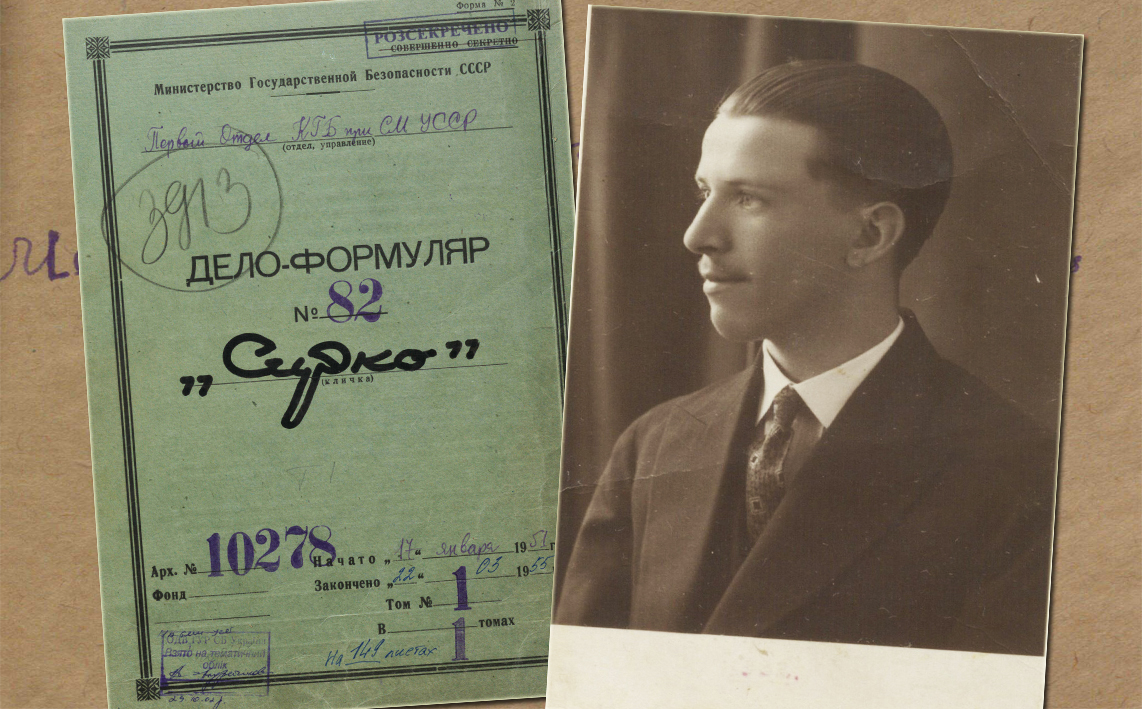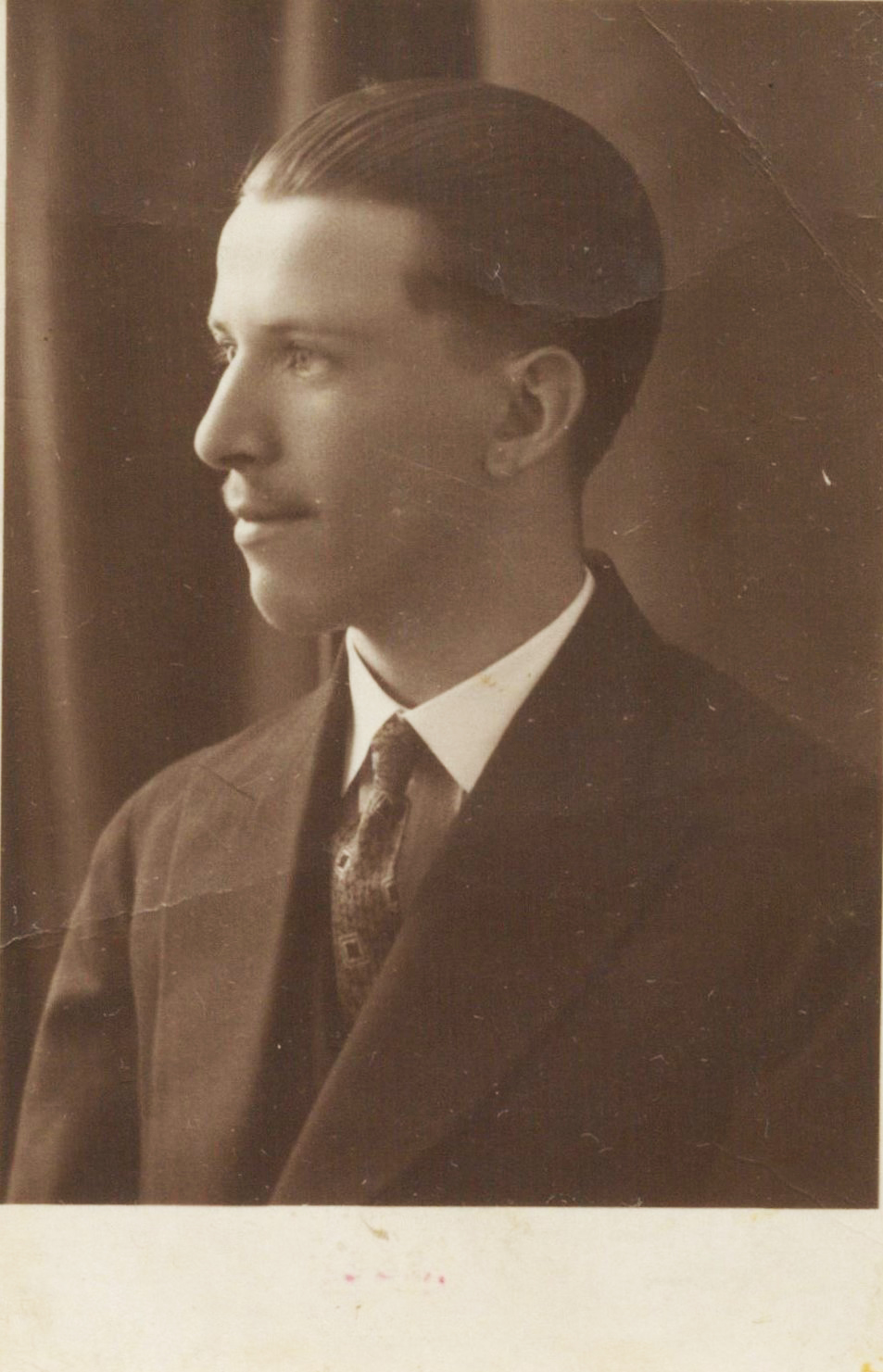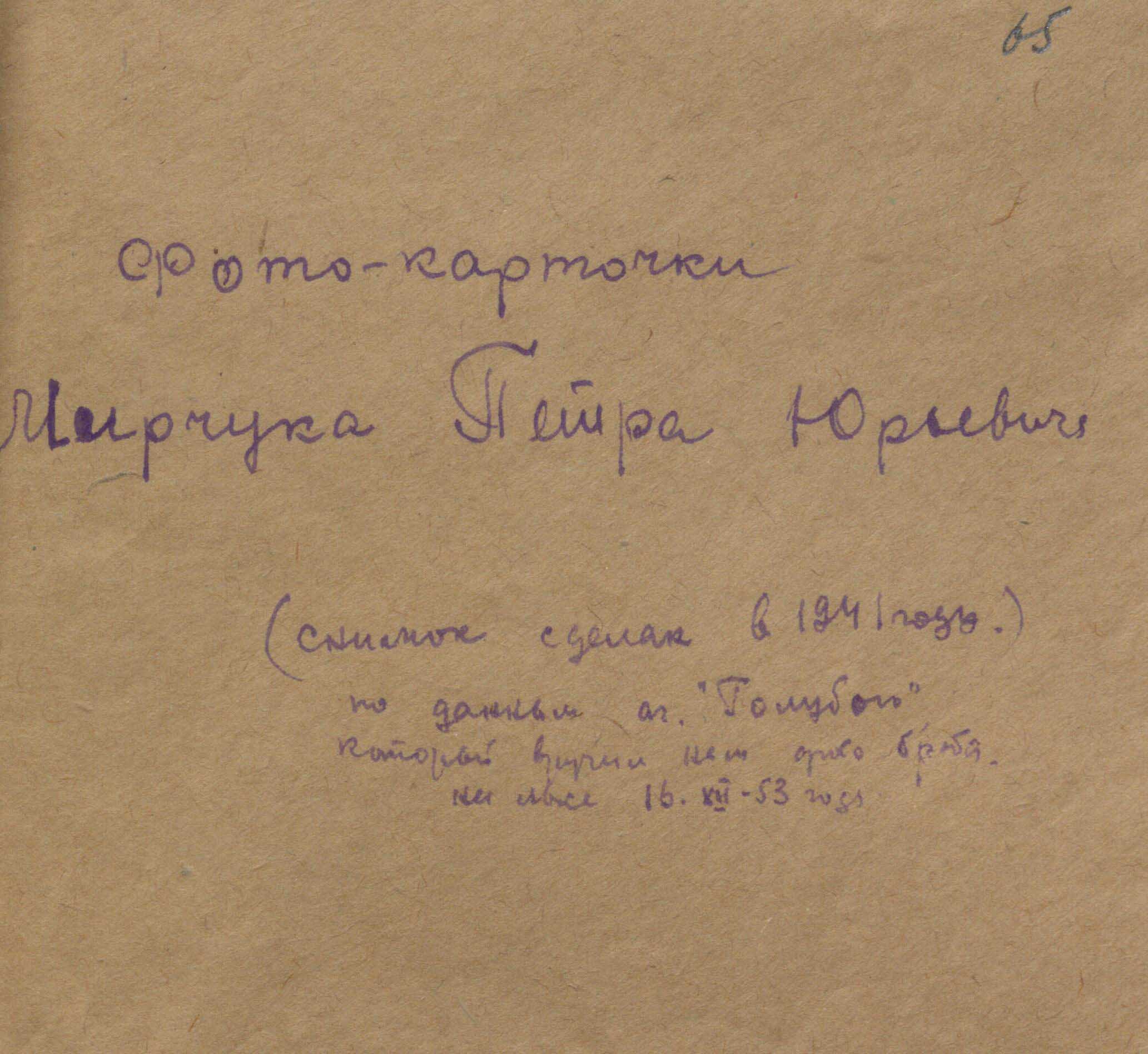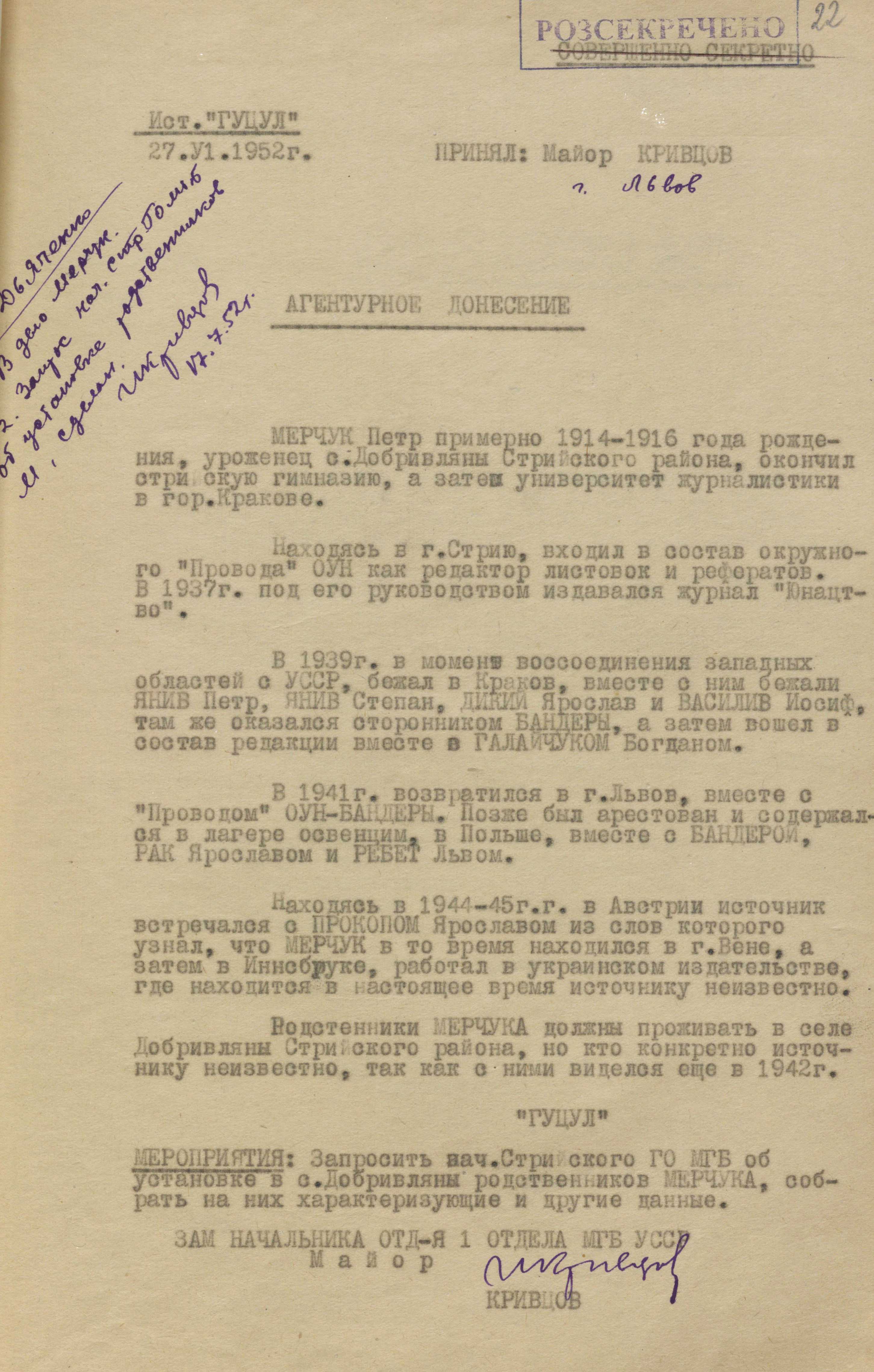Petro Mirchuk. The UPA Chronicler
10/14/2025

Petro Mirchuk became one of the main chroniclers of the Ukrainian liberation movement of the 20th century. His works were based on his own experience and an extensive documentary base collected among members of the OUN and UPA. His book “Ukrainian Insurgent Army 1942–1952” (Munich, 1953) was one of the first comprehensive works on this topic written in exile. It was while he was diligently gathering material for this book that the mgb of the Ukrainian ssr opened an operational case against him. However, they failed to prevent the truth about the UPA from reaching the general public in the West. This is revealed in declassified documents from the archives of the Foreign Intelligence Service of Ukraine.
The case was opened in January 1951. The subject of the investigation was given the code name “Sirko”. If that was related to the legendary Cossack Kish (Regiment – Transl.) Otaman of the Zaporizhzhia Sich, Ivan Sirko, then the logic of the chekists is difficult to understand. After all, I. Sirko was a symbol of military valor and invincibility, devotion to Cossack freedoms, cunning, and military skill. Many legends testify to his strategic acumen and unexpected tactical decisions. Mirchuk, on the other hand, was not a military man, did not fight in the UPA, and certainly did not command any insurgent units. Perhaps in a figurative sense, they wanted to diminish his role and significance by calling him “inconspicuous, unassuming, grey”, or perhaps in the same way that grey dogs are often called (“Sirko” – from siryi, which means grey in Ukrainian – Transl.).
This opinion is supported by the text of one of the first intelligence reports found among the evidence of Viktor Petrov (“Ivanov”) after his mysterious disappearance from Germany in 1949, which was added to the case immediately after it was opened. At the request of the chekists, V. Petrov wrote the following about P. Mirchuk when describing all those with whom he had contacted abroad:
“Petro Mirchuk. A native of Western Ukraine, aged 35–37, of medium height with a dark ‘peasant-type’ face. Party affiliation: member of the OUN-Banderites. Engaged in journalistic activities, but does not stand out in terms of style or special knowledge... Was the main organizer of a large anti-soviet demonstration held by the Banderites (ABN) in Munich on March 10, 1949. At the meeting, which preceded the demonstration, and at a similar meeting also organized by the ABN last year in Munich at the Amerika-Haus, P. Mirchuk was the main speaker. He is an average speaker. His command of German is mediocre. He has a Doctorate Degree, which is why he is often confused with Professor Ivan Mirchuk, Rector of the Ukrainian Free University, often mentioned in newspaper reports.
(FISU. – F.1. – Case 10278. – P. 5).
At the same time, as shown by other archival documents, V. Petrov did not know P. Mirchuk very well, and their paths seldom crossed in Munich. He tried to characterize his journalistic activity by the standards of highly artistic intellectual writing, as he did with regard to the figures of the Mystetskyi Ukrainskyi Rukh (Ukrainian Artistic Movement (MUR – Transl.) – a literary and artistic association of Ukrainian writers and cultural figures in post-war emigration, including Yuri Sheveliov, Ihor Kostetskyi, Ulas Samchuk, Ivan Bahrianyi, and others. Meanwhile, P. Mirchuk occupied a different niche in the émigré community and proved himself to be a truly unique and talented researcher, historian, journalist, popularizer, and public and political figure in this field. In the OUN, he had the code name “Zalizniak.”
The biographical information and characteristics of P. Mirchuk, collected in the case file on the basis of agents’ reports, are rather sparse and do not cover his entire life story. A few open sources make it possible to supplement and clarify them. Based on this, a picture emerges of a man who all his life fought tirelessly for the Ukrainian cause and for Ukraine’s independence.
Petro Yuriiovych Mirchuk was born on June 26, 1913, in the village of Dobrivliany, now in Stryi district of Lviv region. After graduating from Stryi Gymnasium, he studied at the Law Faculty of Lviv University in 1932–1933 and 1937–1939. In the early 1930s, he became a member of the OUN. He participated in the publication of the “Bulletin of the Regional Executive of the OUN in Western Ukrainian Lands” and edited the nationalist periodicals “Molode Selo” (“Young Village”) and “Nash Svitohliad” (“Our Worldview”). He was an assistant of the Regional Executive of the OUN.
In 1939–1940, he was an organizer of Ukrainian nationalist youth groups in Kholmshchyna (Chełm Land). He later moved to Prague, where he continued his studies at the Ukrainian Free University. In June 1941, he received a Doctorate Degree in Law and Political Science. Shortly thereafter, he participated in the preparation of the Act of Restoration of the Ukrainian State, which was proclaimed on June 30 in Lviv. Because of his involvement in this, as well as his rejection of the Third Reich’s policies in Ukrainian lands, he was arrested by the Gestapo in September of that year (according to other sources, in November). He was first held in prisons in Lviv and Krakow, and from 1942 – in the Auschwitz concentration camp.
One of the archival documents states that he was in the concentration camp together with S. Bandera, Ya. Rak, L. Rebet, and other OUN activists. “In 1944 or 1945,” reads a summary report, “Petro Mirchuk was released from the concentration camp and left for Austria, where he worked with a number of Ukrainian nationalist publications. Later, Mirchuk moved to Munich, where he became actively involved in OUN activities. At different times, he was the publisher of the newspaper “Ukrainskyi Samostiynyk”, a member of the “Central Representation of Ukrainian Emigration” in Germany, and a member of the Central Committee of the “Anti-Bolshevik Bloc of Nations”, where he defended the interests of the OUN-Banderites. In 1951, he left Germany for Canada, where he worked as a journalist, participated in the compilation of a book about the UPA, and in 1953 published the book “Ukrainian Liberation Cause and Ukrainian Emigration” (FISU. – F.1. – Case 10278. – P. 139–140).
According to the case materials, the kgb, which at that time organized the operational cultivation of P. Mirchuk, did not have sufficient intelligence capabilities to obtain reliable information about him. Therefore, there are inaccuracies in the documents. In particular, P. Mirchuk did not leave for Canada, but for the United States. And not in 1951, but in 1950. The research mentions that he “left for the United States on Roman Shukhevych’s instructions to write the history of the OUN-UPA.”
Overseas, he headed the Union of Ukrainian Political Prisoners in the United States, was a long-time member of the regional administration of the “Organization for the Defense of the Four Freedoms of Ukraine”, and the regional administration of the “Ukrainian Congress Committee of America”. He taught at several American colleges. In 1969, he received a PhD from the Ukrainian Free University. He was co-editor of “Vyzvolnyi Shliakh”, “Homin Ukrainy”, “Ukrainska Trybuna”, and “Ukrainskyi Samostiynyk”.
In accordance with the practice of the time, foreign residenturas of the kgb of the ussr bought copies of these and other émigré newspapers, carefully analyzed their content, and even opened cases against the authors of anti-soviet articles based on some publications. The printed editions edited by P. Mirchuk were also closely monitored. One of the reports analyzes his article entitled “The Second Stage” in the newspaper “Ukrainskyi Samostiynyk” Issue 49 of December 17, 1949. In it, P. Mirchuk pointed out that after the end of World War II, Ukrainian political émigrés were faced with the task of “tearing off the mask of the bolsheviks and showing the world the latters’ true face, ... their imperialist policy of conquest, and mobilizing the West against moscow imperialism.”
Therefore, the kgb of the Ukrainian ssr continued to develop plans on how to influence “Sirko” and force him to change his rhetoric. Traditionally, they gathered information about his close relatives in order to try to use someone else to carry out their operational game. But this did not work. According to archival documents, P. Mirchuk’s father and mother were exiled to remote areas of the ussr, where they died in 1947. His sisters Maria, born in 1919, Olga, born in 1924, and Yustyna, born in 1928, were also deported by the stalinist regime “for active nationalist activity”.
His brothers Vasyl, born in 1910, and Pavlo, born in 1922, were living in the village of Dobrivliany in Stryi district at the time. However, they had no contact with Petro and knew nothing about him. They only managed to obtain a photograph of their brother dated 1941. All other attempts to involve them or other distant relatives in the investigation were unsuccessful.
Therefore, P. Mirchuk’s activities abroad were further monitored from the positions of the kgb residentura at the ussr embassy in the United States. The reports mentioned the publication of his works “Ukrainian Insurgent Army 1942–1952” (Munich, 1953), “The Act of Restoration of Ukrainian Statehood on June 30, 1941: (Its Genesis and Political and Historical Importance)” (Munich, 1953), “The Ukrainian Liberation Cause and Ukrainian Emigration” (Toronto, 1954), “For the Purity of the Positions of the Ukrainian Liberation Movement” (Munich–London, 1955) and others. He also co-authored the collection “UPA in the Struggle for Freedom” (New York, 1954).
All in all, P. Mirchuk wrote more than two tens of books, and his works became the primary sources for further research into the activities of the OUN and UPA. He hurried to get everything done and ensure that nothing was forgotten. In the preface to one of his books, he wrote: “Despite all the difficulties that must have contributed to the shortcomings of our outline of the history of the UPA, we, relying on documents already published in the Land (Ukraine – Transl.) and additional information from some participants in the struggle, decided to make it available to the public in order, among other things, to encourage those who can add certain additions or clarifications to submit them before time erases them from their memory. For it is our duty to pass on to the future as accurately as possible the recorded pages of that great heroic era of our people, which is called the history of the UPA.
Petro Mirchuk passed away on May 16, 1999, in Philadelphia (USA), at the age of 85.






